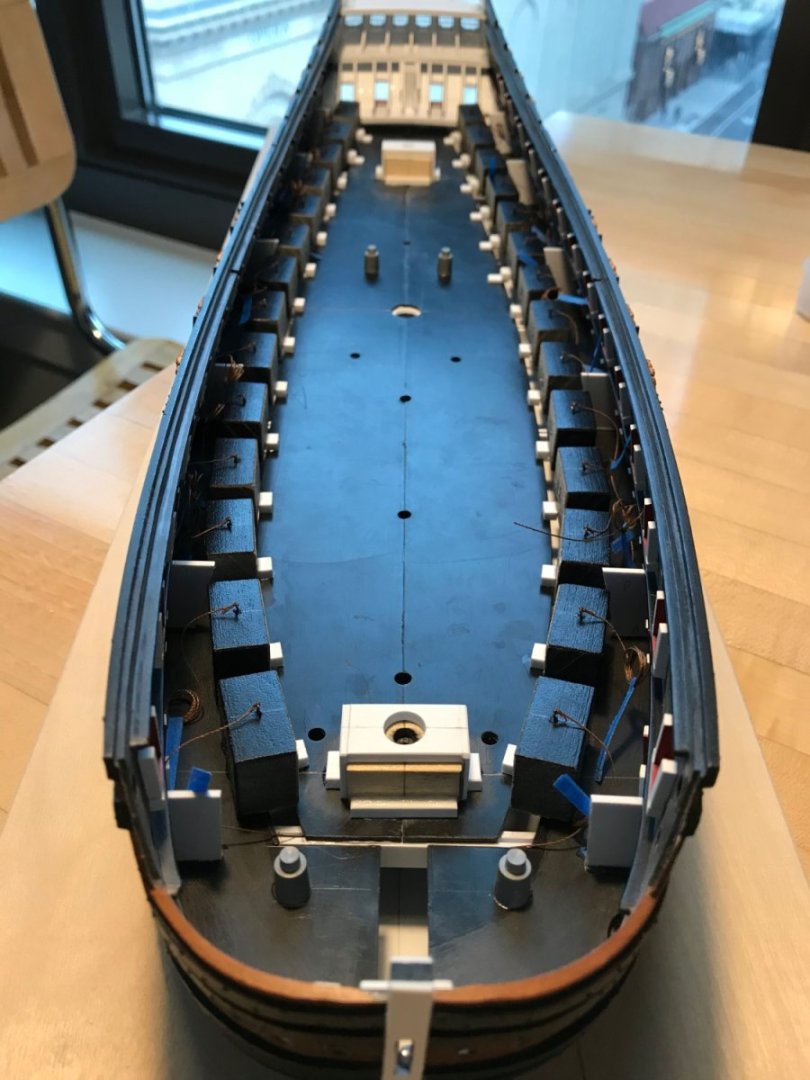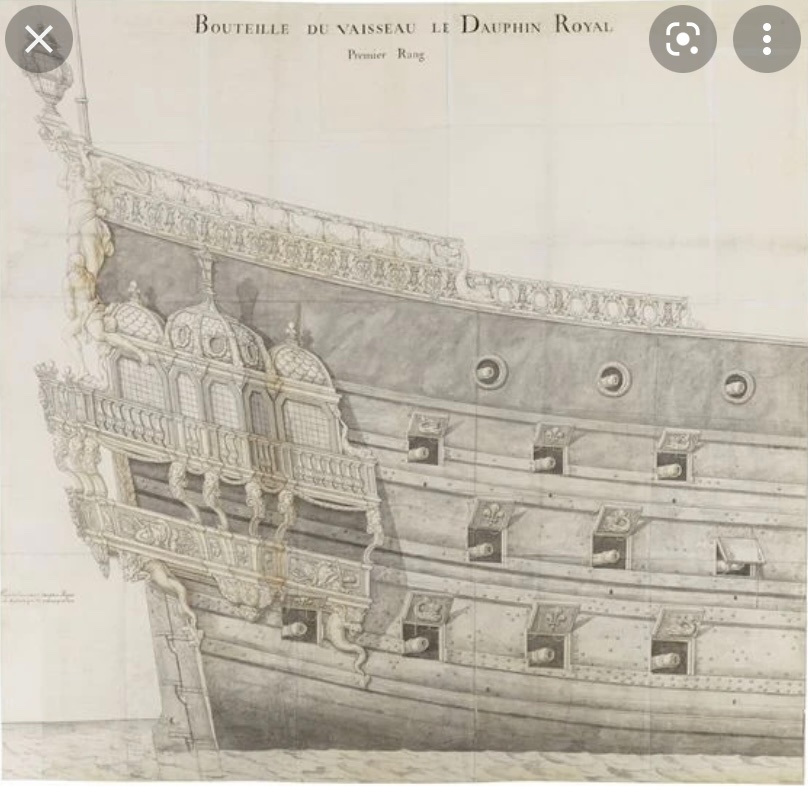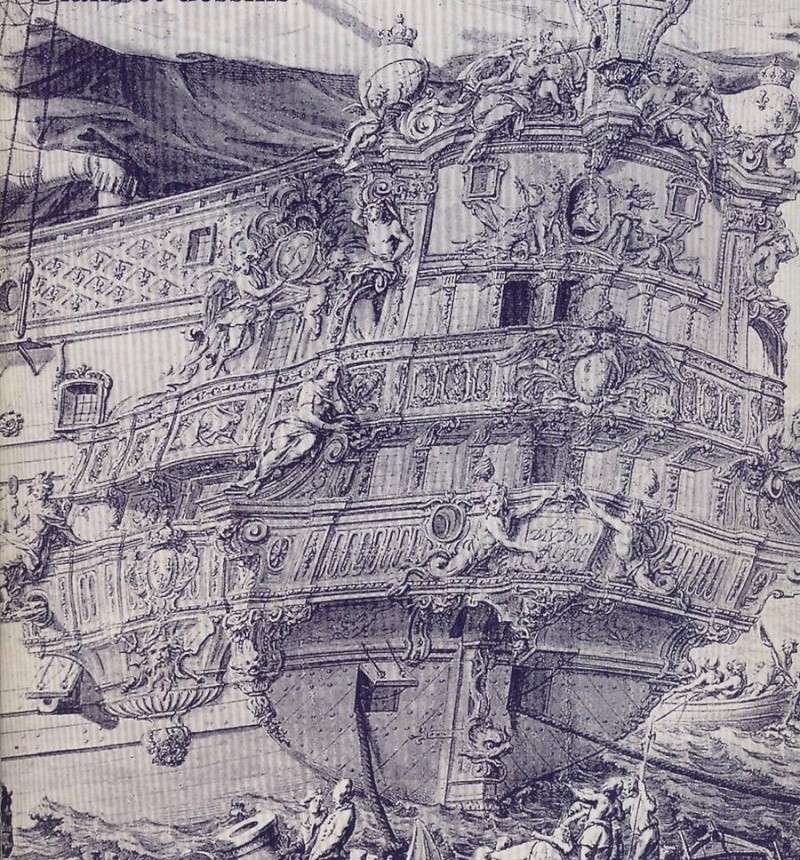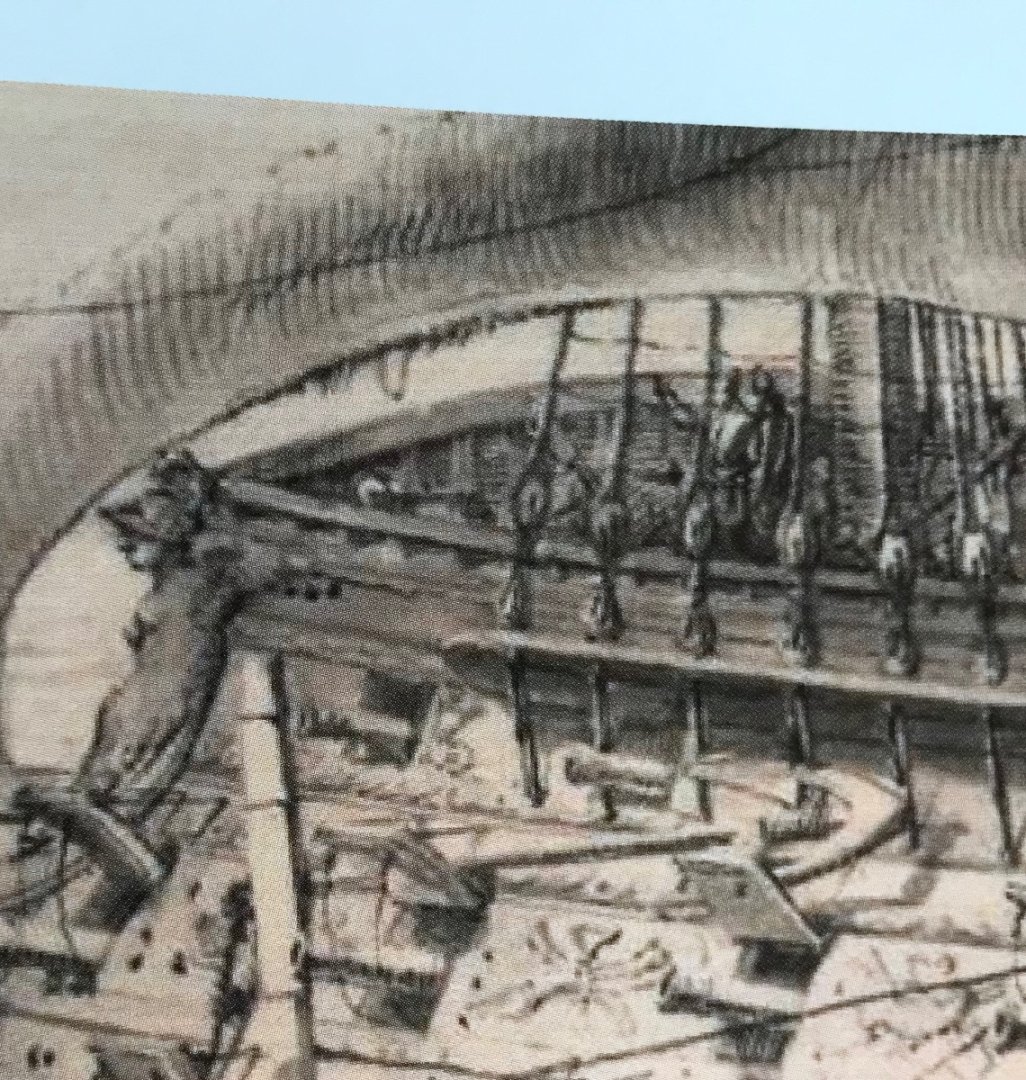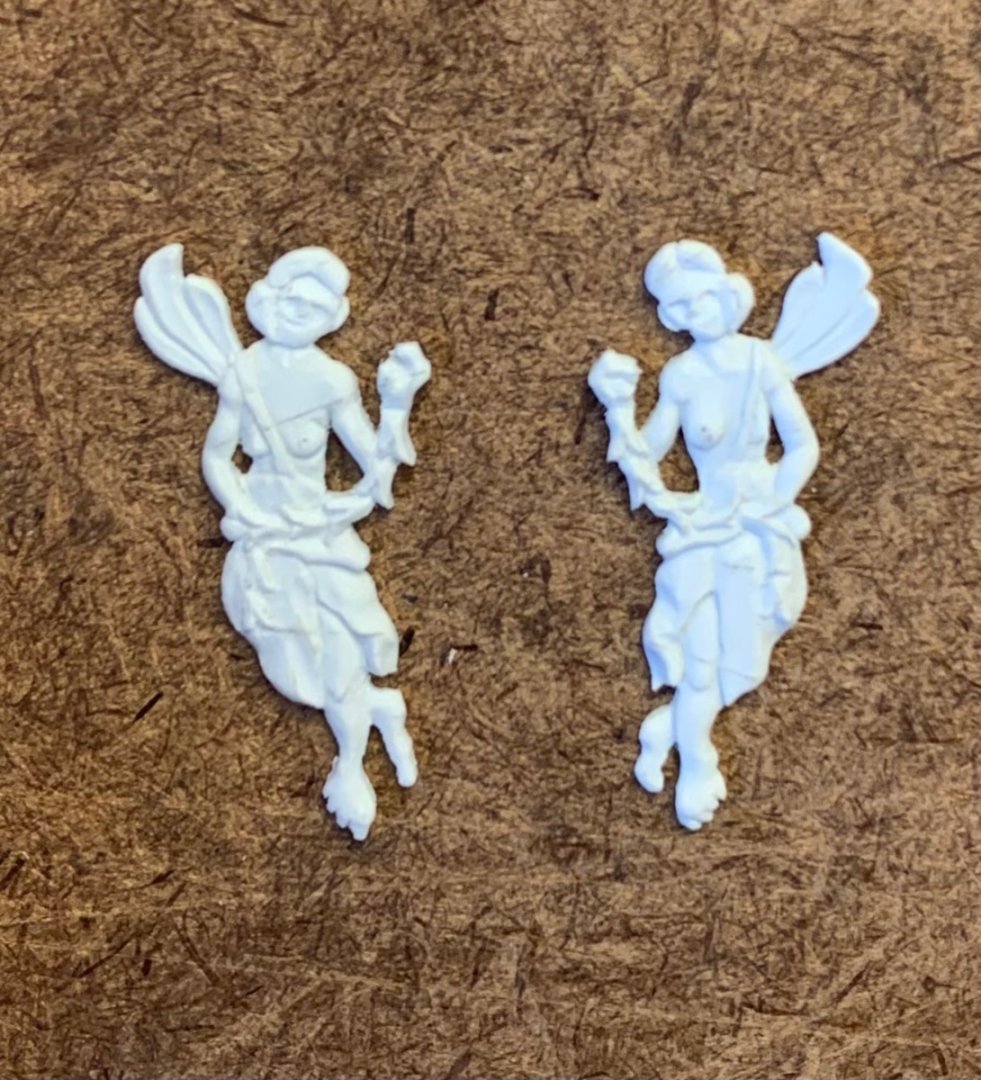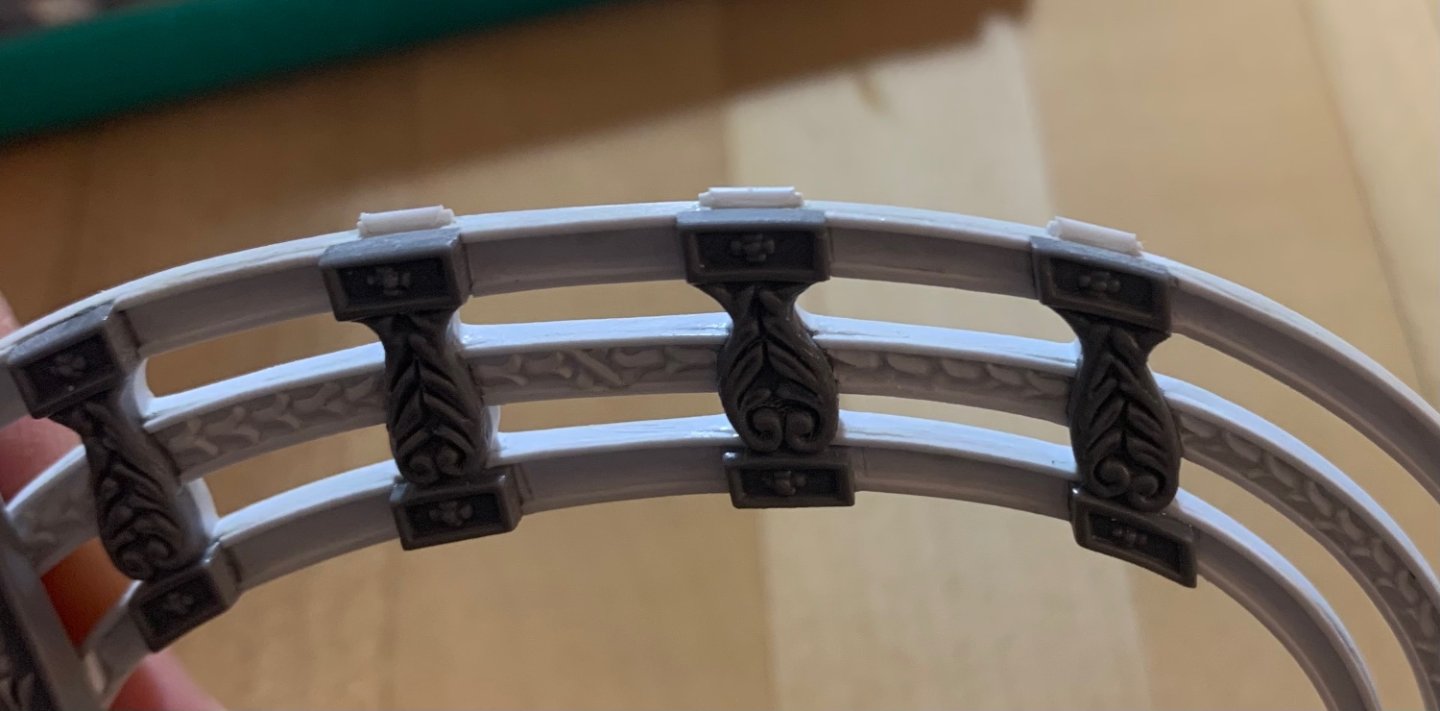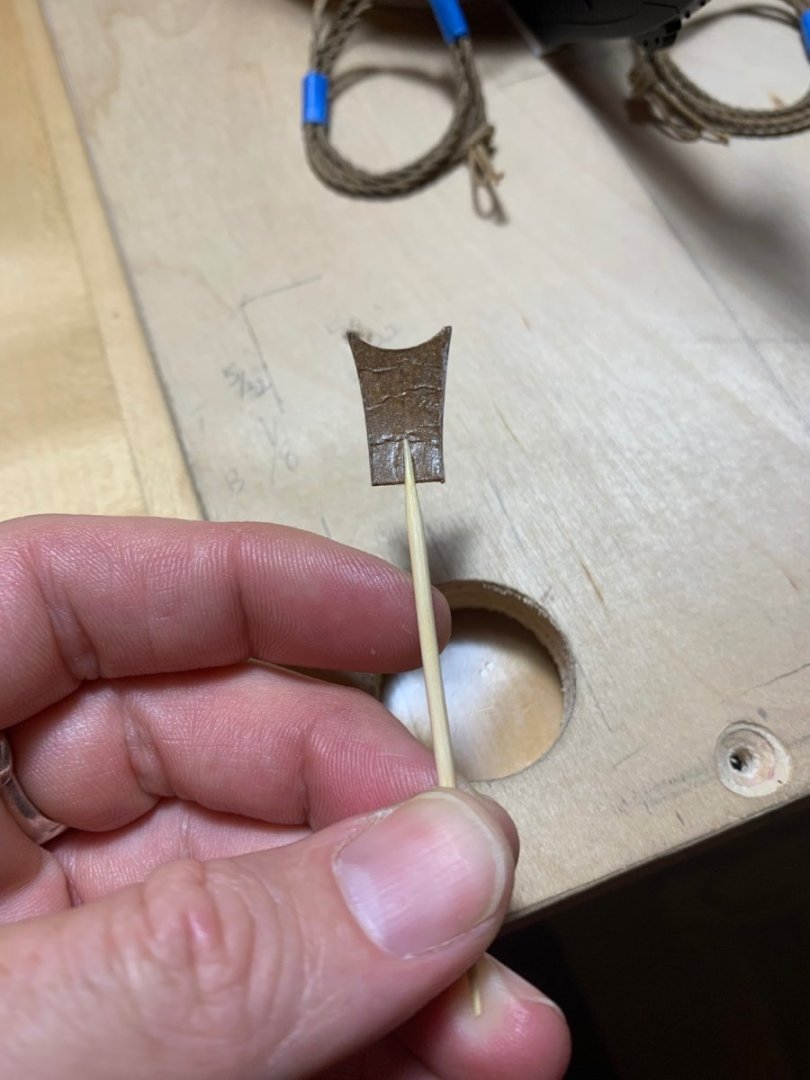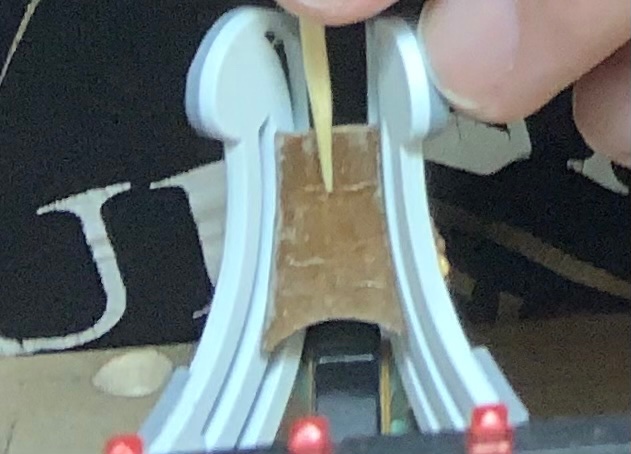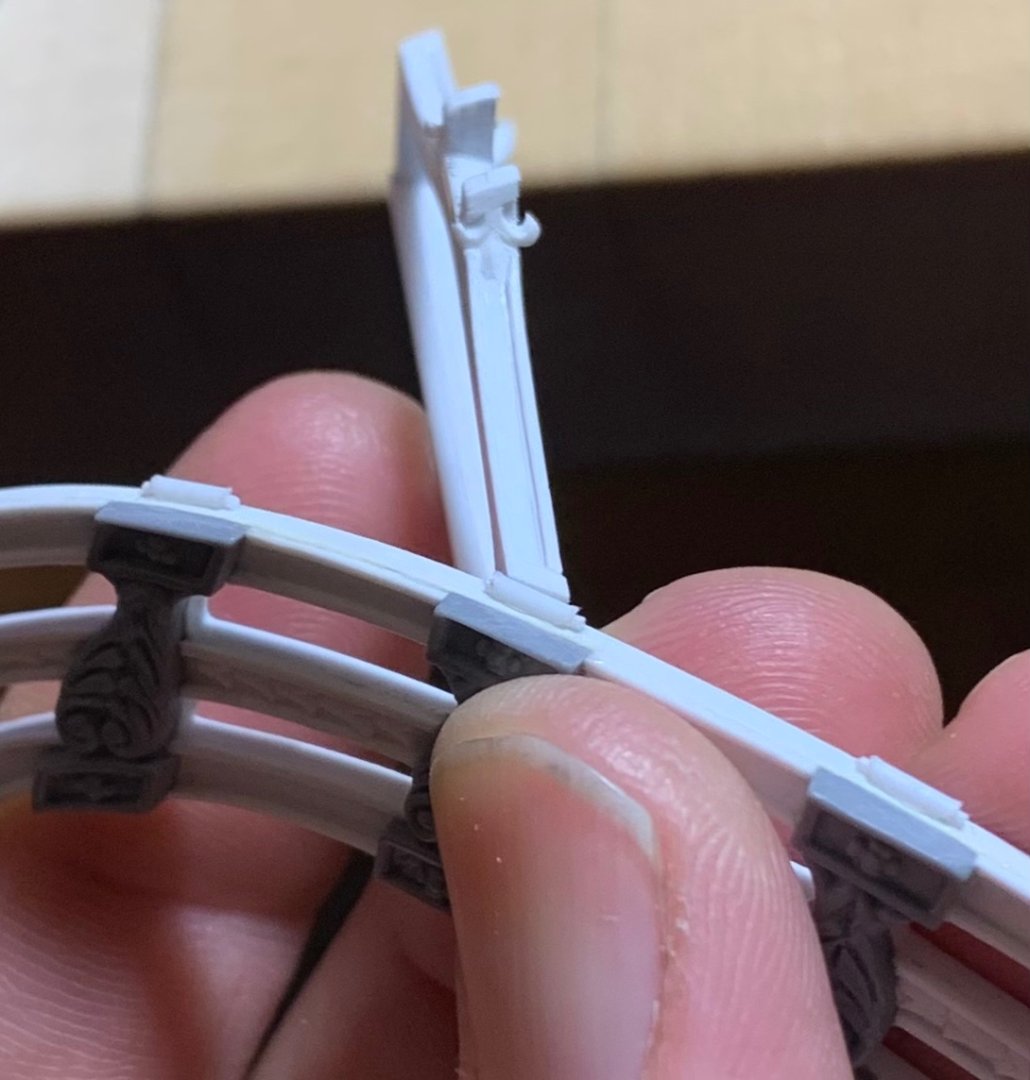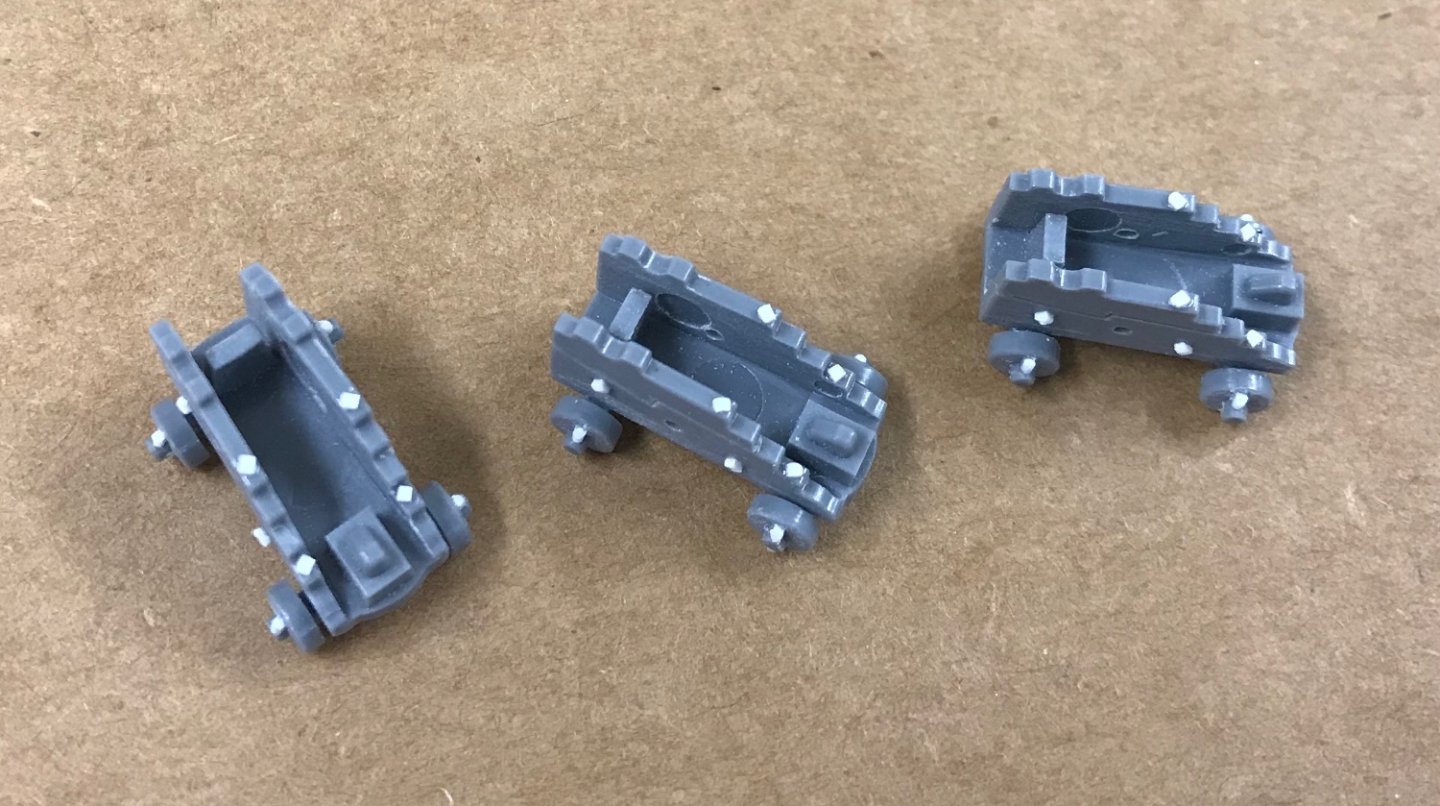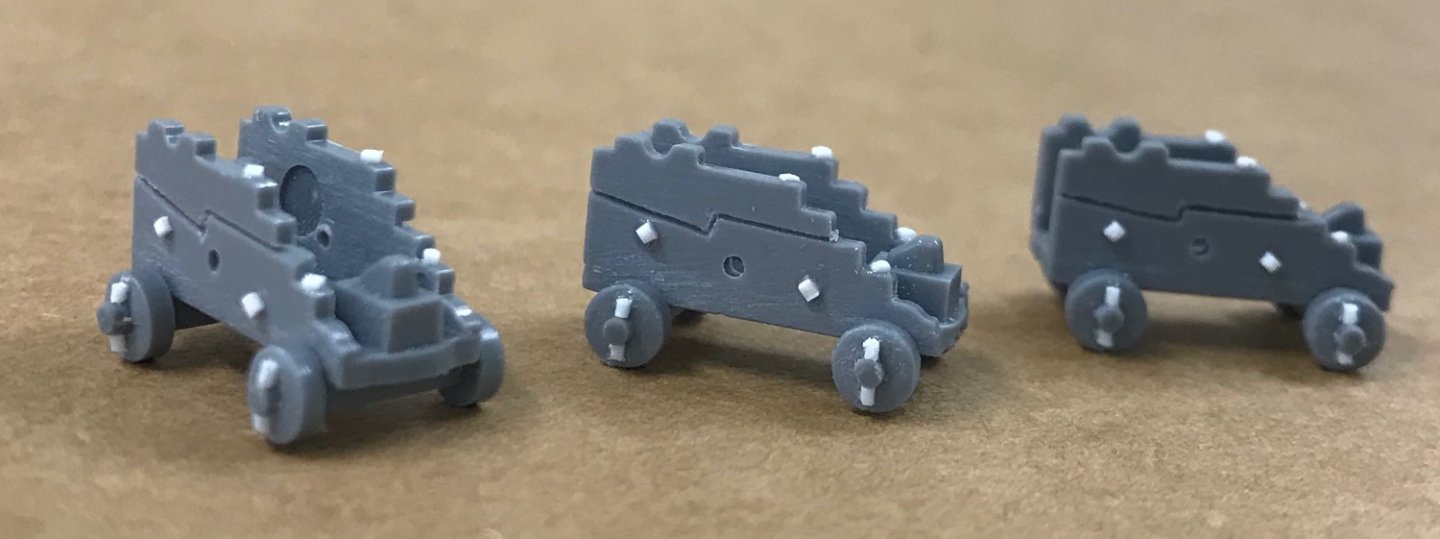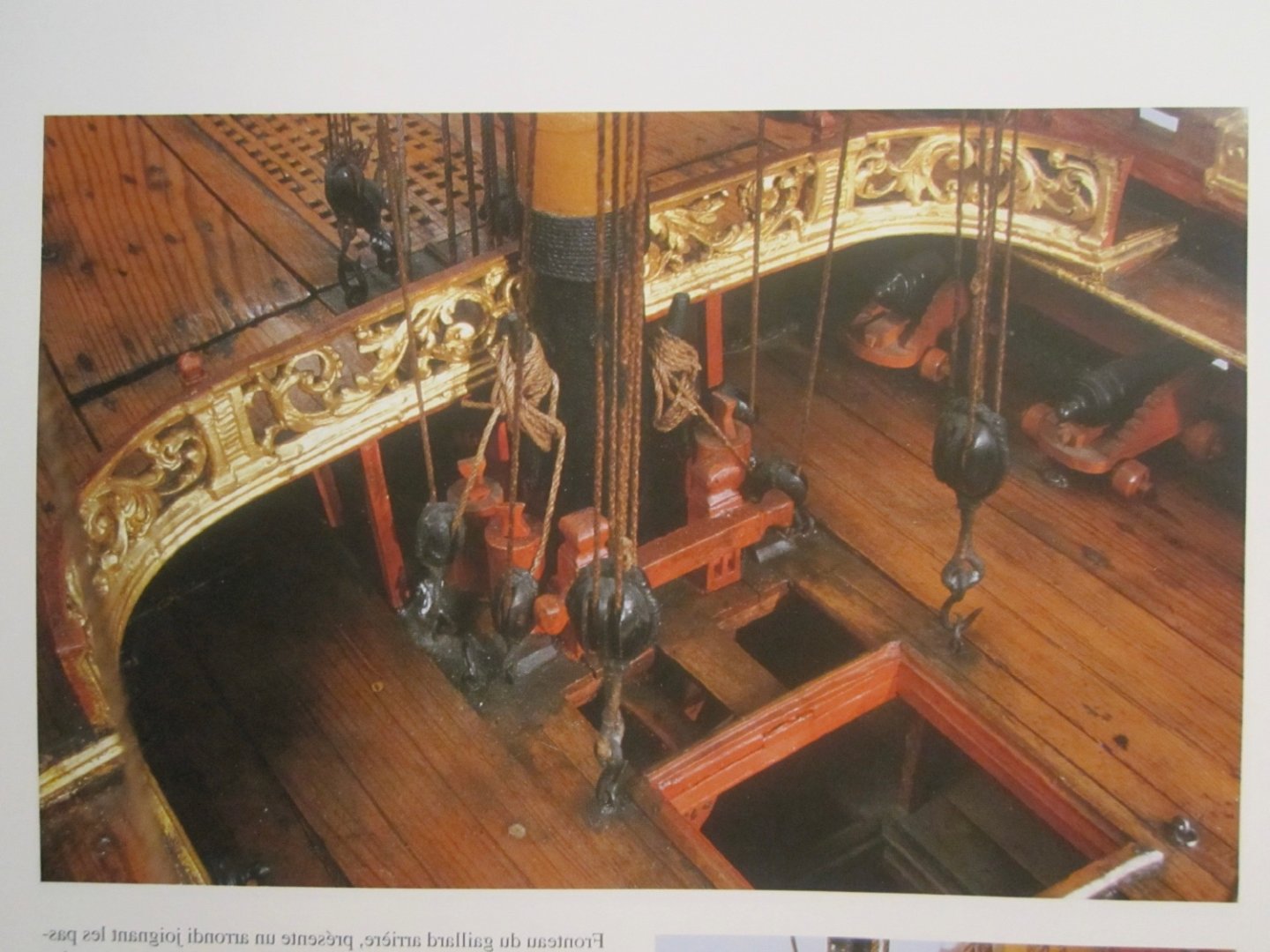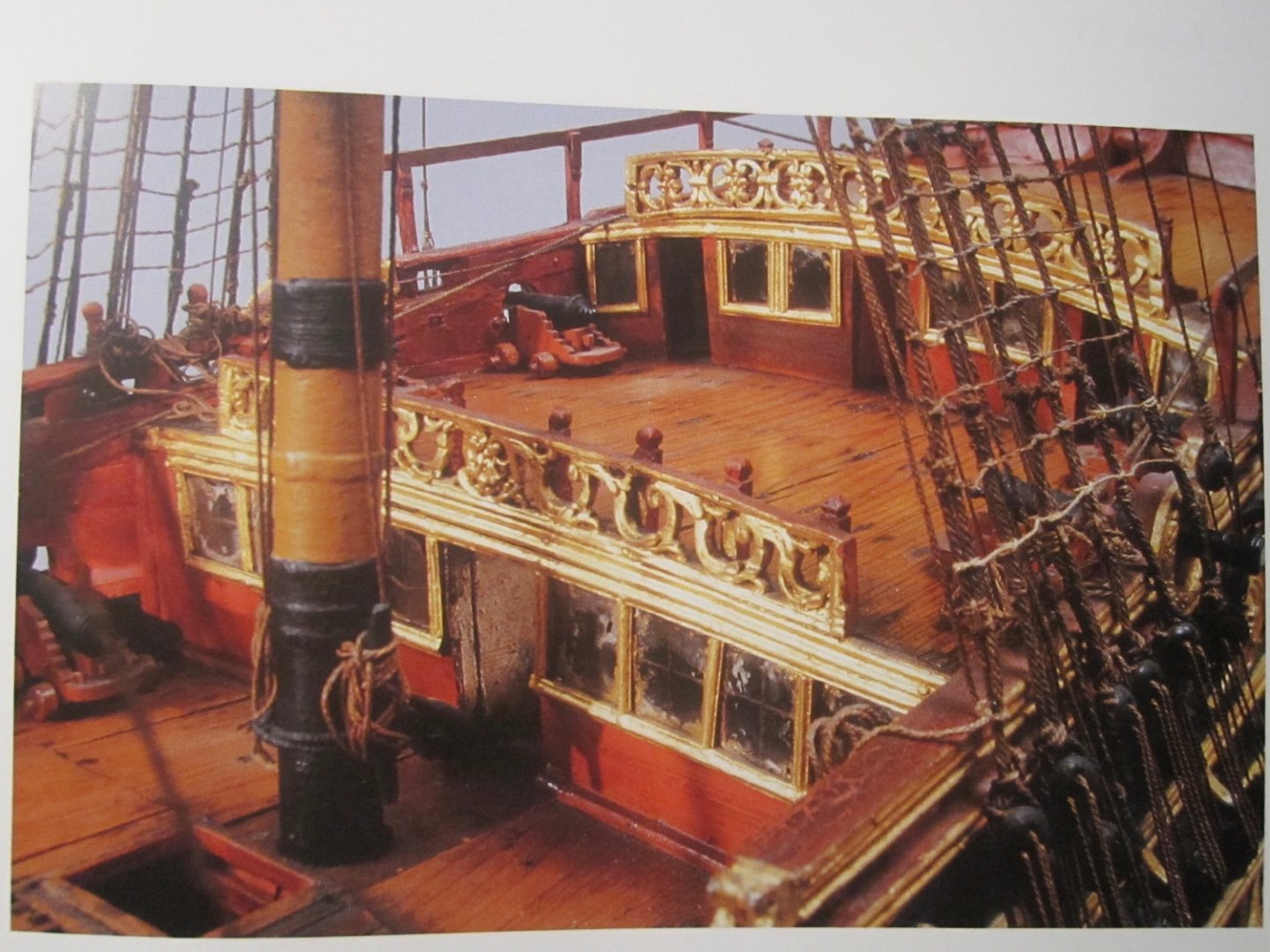-
Posts
3,292 -
Joined
-
Last visited
Content Type
Profiles
Forums
Gallery
Events
Everything posted by Hubac's Historian
-
Yes, Bill, that is basically my plan. I’ve secured the in-board end of the haul-down to an eye-bolt at the top of my dummy carriage blocks. Happy Thanksgiving to all! There is much to be thankful for, here on MSW, and I appreciate everyone’s unique contributions to the forum. All the best, Marc
- 1,508 replies
-
- Le Soleil Royal
- Heller
-
(and 1 more)
Tagged with:
-
To be honest, I’m not sure what I really know - I can only draw inferences from the best primary sources I’ve found. I like Henry’s idea about half-drilling holes and using stiffened thread or wire for the lifts. If I were going to show my lids in the more realistic 1/2 or 3/4 open view, this would be my approach. Personally, I’m going for the less realistic fully open view because I spent too much effort detailing the inner lids to hide them. I’m only doing a single-lanyard haul-down, which is also, apparently, less realistic.
- 1,508 replies
-
- Le Soleil Royal
- Heller
-
(and 1 more)
Tagged with:
-
Extremely well done, Mike. It is fascinating that this area of supporting timbers is more of a “splay” than a rigidly parallel construction. This is art infused with the science of the thing. Very impressive!
- 607 replies
-
- winchelsea
- Syren Ship Model Company
-
(and 1 more)
Tagged with:
-
The kit shows two lanyards. Girardon’s drawing if the RD1668 shows two: Puget’s drawing of the DR1681 shows two: Puget’s drawing of the Monarque shows two: Two seems like a likely number for the lifting ropes.
- 1,508 replies
-
- Le Soleil Royal
- Heller
-
(and 1 more)
Tagged with:
-
‘Not sure I’m right about that either. Spell-check had issues with it, but I didn’t like the alternatives.
- 1,508 replies
-
- Le Soleil Royal
- Heller
-
(and 1 more)
Tagged with:
-
I am your online source, Bill. I have the benefit of building the kit (or, at least starting to build the first one) some 36 years ago. I moved really slow on that one! This current kit build sat in my parents’ basement for some 20+ years, before I figured out what to do with it. I spent plenty of time, over the years, looking at kit sprues. There is almost nothing in this kit that I won’t immediately recognize - excepting for the kit-supplied blocks, which are numerous, confusing, and mostly best thrown-away.
- 1,508 replies
-
- Le Soleil Royal
- Heller
-
(and 1 more)
Tagged with:
-
Well, Ian, it was always a model, but NOW it’s a model; you bled on, or near it. Congratulations! Kidding, of course - I love your inventiveness and willingness to do difficult things. I’m glad you are on the mend.
- 536 replies
-
- Quadrireme
- radio
-
(and 1 more)
Tagged with:
-
This is your main mast step. There is a corresponding rectangle moulded into the hull interior, where this piece is glued-in. Nice work, on the pedestal drilling, BTW.
- 1,508 replies
-
- Le Soleil Royal
- Heller
-
(and 1 more)
Tagged with:
-
It is frigid today, but no snow in NYC, at least.
- 1,508 replies
-
- Le Soleil Royal
- Heller
-
(and 1 more)
Tagged with:
-
Before putting in the lower deck, I would re-enforce the seam on the inside with strip styrene; you will have to flex the hull, a little, to get the glued-together deck in place, so I always think it is worthwhile to do this. I would not bother painting the lower decks. You’ll want a good styrene to styrene bond for the carriage wheels because you definitely don’t want to have to fish around for loose carriages when all of the decks are covered over. Victor Yankovich is doing an amazing SR bash, and I’m pretty sure he used brass pedestals on the keel. This is a nice upgrade. The Heller base is not bad, but the brass looks really swanky.
- 1,508 replies
-
- Le Soleil Royal
- Heller
-
(and 1 more)
Tagged with:
-
As usual, David - you are right-on-point. Yes, I was thinking the same thing. Thank you, Michael!
- 2,696 replies
-
- heller
- soleil royal
-
(and 9 more)
Tagged with:
-
It turns out that coaching my son’s 5th grade CYO basketball team has been more involved than I anticipated; owing to the pandemic, we are essentially starting from scratch, so I have spent quite a lot of time finding good fundamentals drills, while I learn the broad-strokes of the Pack-Line defense. It is all good fun, but it has cut into ship time. I did manage to finish up my starboard bow angel: I did a final/final fitting of the headrails and their supports. Those have now been masked, primed and I’ve begun putting them into colors. Per Nigel’s suggestion, I am filling-in the missing stair treads on the lower beakhead bulkhead, where the turret seats of ease used to be. I made a cardboard pattern for the forward terminus of the head grating. I’ve found that saturating this thin card with common CA (thin) makes it into a durable pattern: I made a rub-tracing of the middle headrail profile, so that I could pattern the arcing slats of the grating. I am also very happy with how this representation of scroll heads came out, in simulation of the headrail supports actually finishing beneath the lowest headrail: As these are thoroughly impossible to carve at this scale, I make these from two diameters of styrene rod. It’s a little fiddly to mate the beveled end of the larger diam. rod to that of the smaller diam. rod, but I found that touching my knife point to a drop of liquid styrene cement enabled me to pick these tiny bits up and place them onto a glue spot where they belong. I’ll be painting for some time, but soon the whole head structure will begin to come together. Thank you for stopping by.
- 2,696 replies
-
- heller
- soleil royal
-
(and 9 more)
Tagged with:
-
Yes, Philemon, you are being met with hostility because you are leading with hostility. At best, to dismiss Ab’s work on Witsen’s pinas ship is mis-placed. At worst, it is self-serving, yet it doesn’t serve you well here. The question of who you are, I think, is relevant when you are tearing someone down to make your point. Ab Hoving took the opaque work of Witsen and made it coherent and intelligible. He spent 14 years on the endeavor, and it resulted in a fully coherent ship model, and his work now also exists as a virtual treatise that takes you inside the ship and across every square inch. I think that all counts as quite a significant accomplishment. Ab Hoving is not a personal friend of mine. I have had a few exchanges with him on the various forums, where I have found him to be informative and gracious with his time and insight to myself and other model makers. It is not my point that authors of books on any subject are wholly un-assailable. You are certainly within your rights to ask questions and seek answers. However, to pretend that one man’s life’s work is a pile of garbage because it does not neatly support your thinking is just unfair. Ask yourself - would you even be studying Witsen and Van Yk, in this manner, if Hoving hadn’t written his book?
-
Great solutions to vexing problems. I really like the distress wash you applied to the veneer deck. I was wondering how you would approach that. Regarding the beakhead doors, my main thought is that these doors existed to resist the punching seaways.
-
I am not making any claims, Friend. I am postulating a guess. That is all. I’m not sure that the answer you are seeking is out there in the recorded cannon. I personally couldn’t tell you, though, because I have not invested any time or energy into researching that problem. You seem to have quite a problem with Ab Hoving. I will tell you that I certainly know who he is. He has done far more than most to bring light and understanding to this time period where knowledge was spoken from one generation to the next, and perfected through the doing of the thing. I don’t know who you are, though. You seem to be searching for absolutes in a time that was more art than science.
-
The “cascabel” to set on the “quoin.” The incorrect trunnion location is not something I have considered. Fortunately, I have not painted my visible deck guns, yet, so I can move these. Doing so is a tremendous improvement. One other fiction that was pointed out to me is where the trunnions rest on the carriages. Heller represents a short raised block, onto which the trunnions rest, and over which there would be cap squares. In reality, such a small block of wood would never resist the tremendous recoil forces of firing a gun. Instead, the trunnions should be set into a continuous top edge of each cheek, that is only stepped on its aft edge. I have not decided what, if anything, I plan to do about this, as I have already painted my carriages. I could fill-in a little bit before and after the short blocks and that would be an improvement that doesn’t alter the height of the gun above deck. At some point, in the future, I will decide whether that extra effort is worth it to me.
- 1,508 replies
-
- Le Soleil Royal
- Heller
-
(and 1 more)
Tagged with:
-
As far as I know, that is correct for French ships of the period: The Louis Quinze mode of circa 1710.
- 1,508 replies
-
- Le Soleil Royal
- Heller
-
(and 1 more)
Tagged with:
About us
Modelshipworld - Advancing Ship Modeling through Research
SSL Secured
Your security is important for us so this Website is SSL-Secured
NRG Mailing Address
Nautical Research Guild
237 South Lincoln Street
Westmont IL, 60559-1917
Model Ship World ® and the MSW logo are Registered Trademarks, and belong to the Nautical Research Guild (United States Patent and Trademark Office: No. 6,929,264 & No. 6,929,274, registered Dec. 20, 2022)
Helpful Links
About the NRG
If you enjoy building ship models that are historically accurate as well as beautiful, then The Nautical Research Guild (NRG) is just right for you.
The Guild is a non-profit educational organization whose mission is to “Advance Ship Modeling Through Research”. We provide support to our members in their efforts to raise the quality of their model ships.
The Nautical Research Guild has published our world-renowned quarterly magazine, The Nautical Research Journal, since 1955. The pages of the Journal are full of articles by accomplished ship modelers who show you how they create those exquisite details on their models, and by maritime historians who show you the correct details to build. The Journal is available in both print and digital editions. Go to the NRG web site (www.thenrg.org) to download a complimentary digital copy of the Journal. The NRG also publishes plan sets, books and compilations of back issues of the Journal and the former Ships in Scale and Model Ship Builder magazines.



